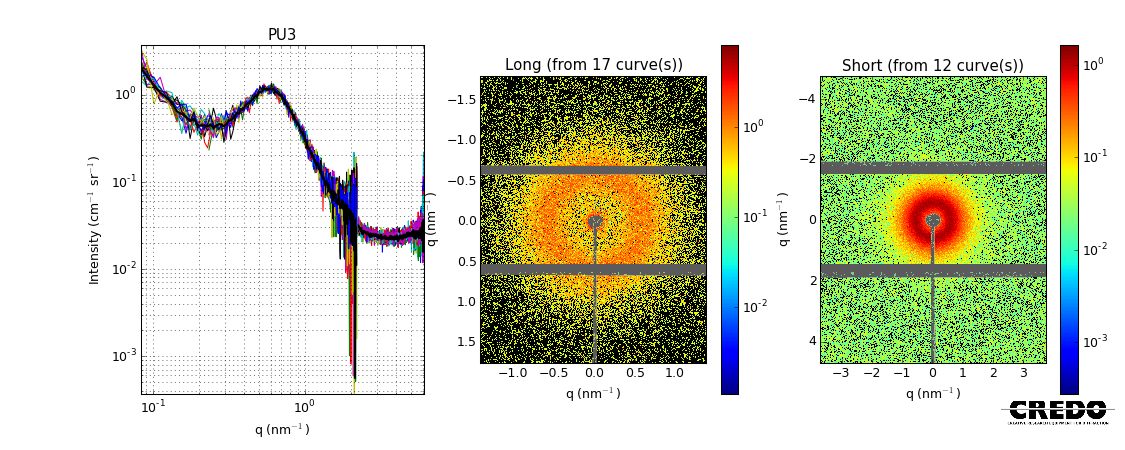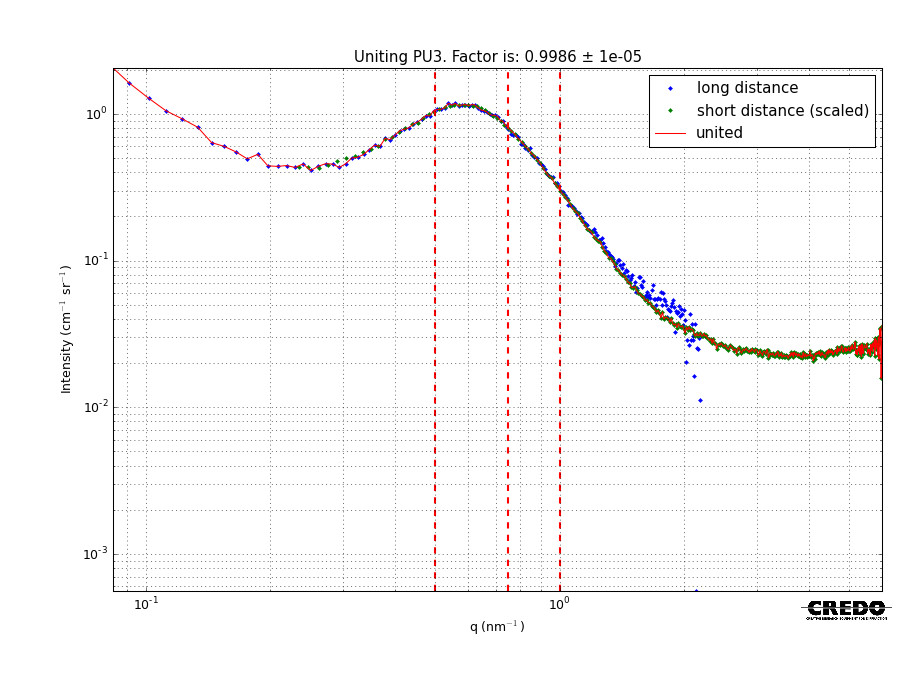Measuring in a wide angle range
By varying the sample-to-detector distance different ranges in the scattering variable, $q$ (or the scattering angle, $2\theta$) can be reached. Scattering curves measured at different experimental geometries (commonly denoted as "short" or "long" geometry) can be united to form a single curve covering a wide range in $q$. The uniting involves finding a common interval of $q$, which is present in both the short and long distance curves, and determining a scaling factor, which, applied to one of the curves, makes it overlap the other on the selected interval.

The figure above presents measurements of a polyurethane sample, at short and long experimental geometries. A so-called correlation peak is to be observed at 0.6 nm-1 in both exposures. The common $q$-range is determined and the scattering curves are scaled together, as shown in the following figure. The uniting factor is very near to unity, meaning that the sample is stable and the absolute intensity calibration is consistent between the two geometries.

